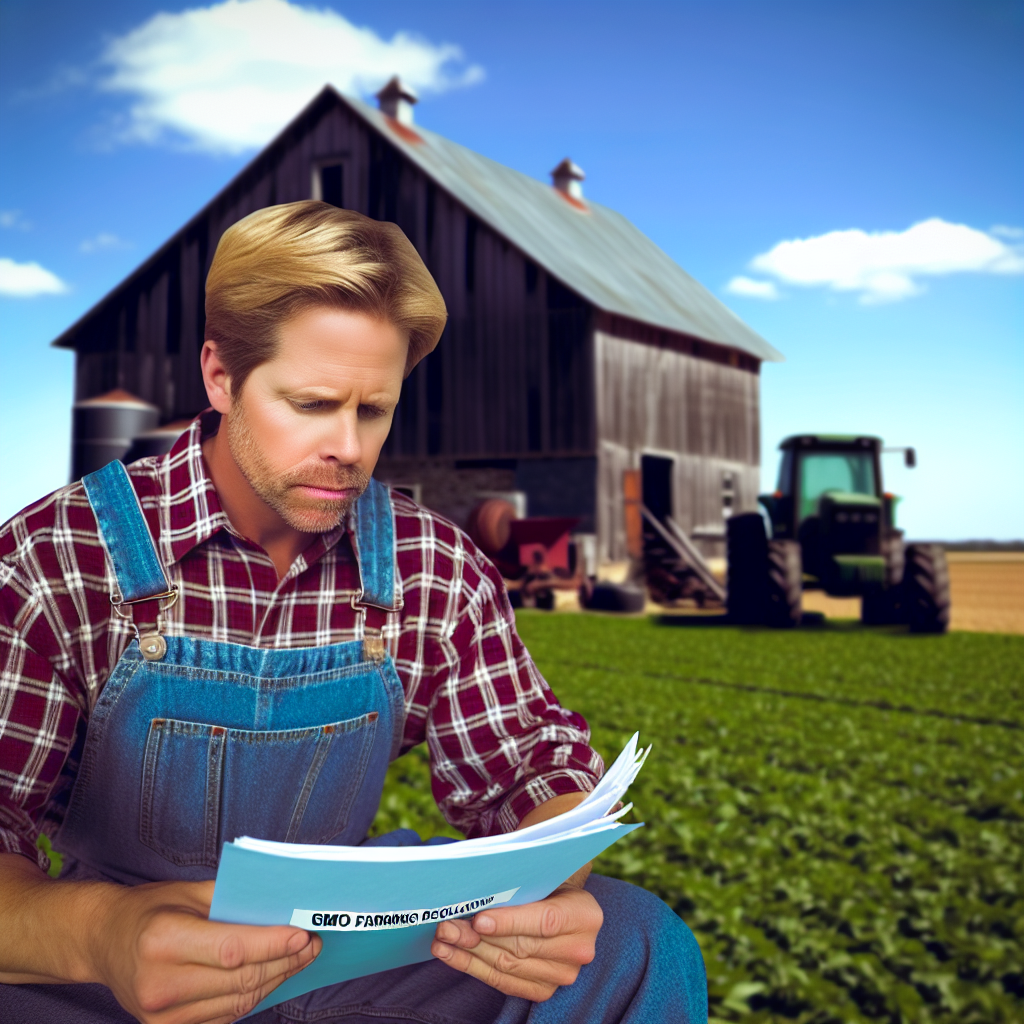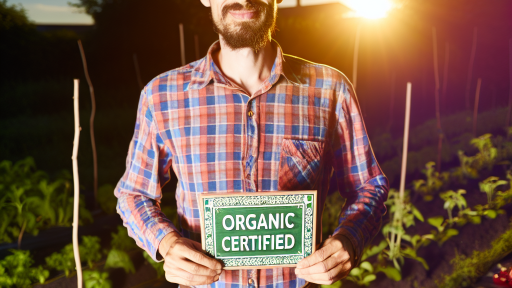Overview of GMO Farming
Definition of GMO Farming
GMO farming refers to agriculture that uses genetically modified organisms.
These organisms have altered DNA through biotechnology.
This process enhances desired traits, such as pest resistance.
Farmers often choose GMOs for improved crop yields.
Consequently, GMO farming can increase food production efficiency.
Historical Background
The use of genetic engineering in agriculture began in the 1970s.
Scientists developed techniques to modify plant and animal genes.
In 1994, the first GMO crop, the Flavr Savr tomato, was approved.
Since then, GMO farming has grown significantly worldwide.
Currently, major crops include corn, soybeans, and cotton.
Current Global Usage
Today, many countries cultivate GMO crops on a large scale.
The United States leads in GMO adoption, followed by Brazil and Argentina.
Farmers benefit from higher yields and lower pesticide use.
However, public opinion on GMOs remains divided.
Some advocate for labeling and transparency regarding GMO products.
Transform Your Agribusiness
Unlock your farm's potential with expert advice tailored to your needs. Get actionable steps that drive real results.
Get StartedChallenges and Controversies
GMO farming faces criticism from environmental groups and consumers.
Concerns include potential health risks and biodiversity loss.
Additionally, there are fears of corporate control over food supply.
As a result, regulatory frameworks vary widely across regions.
Balancing innovation with safety remains a critical issue.
Regulatory Framework for GMOs
Key Organizations
The regulation of GMOs is overseen by several key organizations.
In the United States, the USDA plays a crucial role.
The Environmental Protection Agency (EPA) also regulates GMO crops.
The Food and Drug Administration (FDA) ensures food safety and labeling.
Globally, the World Health Organization (WHO) and the Food and Agriculture Organization (FAO) provide guidelines.
Important Policies
Several policies govern the use and study of GMOs.
The Coordinated Framework for Regulation of Biotechnology was established in 1986.
This framework outlines roles for the USDA, EPA, and FDA.
The National Bioengineered Food Disclosure Standard addresses labeling concerns.
Additionally, many countries have specific regulations regarding GMOs.
Compliance Requirements
Farmers must meet specific compliance requirements for GMO cultivation.
They must submit detailed applications before planting genetically engineered seeds.
Regular inspections ensure adherence to safety protocols.
Furthermore, farm operators must maintain careful records of their practices.
Risk Assessment Procedures
Risk assessment is a critical component of GMO regulations.
This process evaluates potential environmental and health impacts.
Organizations like the EPA conduct thorough analyses.
Studies must demonstrate that GMOs do not pose undue risks.
International Standards
Internationally, GMO regulations vary significantly across regions.
Showcase Your Farming Business
Publish your professional farming services profile on our blog for a one-time fee of $200 and reach a dedicated audience of farmers and agribusiness owners.
Publish Your ProfileThe Cartagena Protocol on Biosafety provides a framework for handling GMOs.
This protocol emphasizes risk assessment and public participation in decision-making.
Countries must adhere to both their national regulations and international commitments.
Public Engagement and Transparency
Public engagement processes enhance transparency in GMO regulation.
Organizations often hold public consultations to gather feedback.
Transparency helps build trust among stakeholders and consumers.
Moreover, it ensures that diverse perspectives are considered in decision-making.
Future Trends in GMO Regulation
The landscape of GMO regulations is evolving rapidly.
Emerging technologies, such as gene editing, pose new challenges.
Regulators are exploring how existing frameworks can adapt to these technologies.
Increased collaboration among organizations may improve regulatory efficiency.
GMO Labeling Requirements: Understanding Consumer Rights
Importance of GMO Labeling
Genetically modified organism (GMO) labeling informs consumers about their food choices.
This transparency fosters trust between consumers and producers.
Consequently, clear labeling promotes informed decision-making.
Current Regulations on GMO Labeling
Various countries have different labeling laws for GMO products.
In the United States, the USDA oversees these regulations.
The National Bioengineered Food Disclosure Standard mandates GMO labeling.
This law requires food manufacturers to disclose bioengineered foods.
Furthermore, all products with detectable GMO ingredients must be labeled.
Labeling Formats
There are specific formats for GMO labeling that companies must follow.
They can use text, symbol, or digital link disclosures.
Text disclosures might include “bioengineered” on the packaging.
Conversely, QR codes link to information online for consumers.
This allows companies flexibility in how they communicate with consumers.
Consumer Rights and Responsibilities
Consumers have the right to know what is in their food.
Understanding labels empowers consumers to make conscious choices.
Additionally, consumers must be aware that not all GMOs are harmful.
Many GMO foods are safe and nutritious according to scientific studies.
Challenges and Controversies
Despite the benefits, GMO labeling faces significant opposition.
Some argue that labeling could mislead consumers about safety.
This misconception can create unnecessary fear regarding GMOs.
On the other hand, advocates argue for strict transparency in food labeling.
Future Trends in GMO Labeling
The future of GMO labeling appears to be evolving.
Countries worldwide may implement new regulations based on consumer demand.
Technological advancements may also change how labeling works.
As consumer awareness grows, companies may need to adapt further.
Ultimately, staying informed is essential for both producers and consumers.
You Might Also Like: Protecting Farm Workers Legal Guidelines
Environmental Impact Assessments: Evaluating Safety and Sustainability
Purpose of Environmental Impact Assessments
Environmental Impact Assessments (EIAs) are critical tools in farming.
They help evaluate the potential effects of GMO farming on the ecosystem.
Showcase Your Farming Business
Publish your professional farming services profile on our blog for a one-time fee of $200 and reach a dedicated audience of farmers and agribusiness owners.
Publish Your ProfileConsequently, they inform regulatory decisions and practices.
Steps in Conducting an Environmental Impact Assessment
The first step involves scoping to identify key issues.
Next, researchers collect baseline data regarding the local environment.
Following this, they assess potential impacts of the GMO crops.
Moreover, they outline mitigation measures to address any concerns.
Finally, stakeholders review the assessment findings for feedback.
Benefits of Implementing EIAs in GMO Farming
Implementing EIAs enhances agricultural sustainability.
They promote transparency within the farming community.
Furthermore, EIAs encourage public participation in decision-making.
As a result, they build trust between farmers and consumers.
Challenges in Creating Effective Environmental Impact Assessments
Various challenges arise when creating effective EIAs.
Limited scientific data can hinder thorough assessments.
Additionally, regulatory frameworks may differ across regions.
This variability creates confusion among farmers and stakeholders.
Future of Environmental Impact Assessments in GMO Regulations
The future of EIAs appears promising within GMO regulations.
Advancements in technology will improve data collection methods.
Furthermore, increased collaboration among stakeholders is essential.
Ultimately, enhanced EIAs can lead to better decision-making in farming.
Discover More: Addressing Wage Theft in Agriculture
Cross-Pollination and Containment Measures
Importance of Cross-Pollination Control
Cross-pollination can significantly affect GMO integrity.
Controlling this process is essential for maintaining crop purity.
Effective control strategies help prevent unintended consequences.
Regulations Governing Cross-Pollination
Many countries have specific regulations for GMO farming.
These laws aim to mitigate cross-pollination risks.
Farmers must adhere to these guidelines for compliance.
Containment Measures for GMOs
Containment measures are crucial for successful GMO farming.
They prevent the spread of GMOs to non-GMO crops.
Some effective containment measures include buffer zones.
Isolation distances between GMO and non-GMO crops enhance protection.
Additionally, specific planting patterns reduce cross-pollination risks.
Best Practices for Farmers
Farmers should implement best practices for compliance.
Regular training on regulations keeps farmers informed.
Maintaining clear documentation is essential for accountability.
Moreover, engaging with local agricultural authorities is beneficial.
Collaboration fosters better understanding of containment strategies.
Monitoring and Review Processes
Regular monitoring of crops ensures ongoing compliance.
Farmers should assess cross-pollination risks frequently.
Reviewing procedures can help identify areas for improvement.
Building relationships with fellow farmers enhances community knowledge.
Moreover, sharing successful strategies encourages collective growth.
Showcase Your Farming Business
Publish your professional farming services profile on our blog for a one-time fee of $200 and reach a dedicated audience of farmers and agribusiness owners.
Publish Your ProfileYou Might Also Like: Understanding Water Rights in Agriculture

Trade Regulations: Export and Import Policies for GMO Products
Overview of GMO Trade Regulations
Trade regulations play a crucial role in GMO farming.
These regulations influence both export and import processes.
Countries implement distinct policies to control GMO products.
Understanding these policies can enhance market access for farmers.
Export Policies for GMO Products
Export policies determine how GMO products can leave a country.
Governments assess the safety and compliance of these products.
Many nations require specific labeling for GMO exports.
Additionally, permits may be necessary for shipment.
Exporters must adhere to international standards and agreements.
Key Export Regulations
- Compliance with the Codex Alimentarius standards.
- Approvals from national food safety authorities.
- Mandatory documentation ensuring traceability.
Import Policies for GMO Products
Import policies regulate the entry of GMO products into a country.
Each nation has its own requirements and restrictions.
Some countries enforce strict bans on certain GMOs.
Others may require extensive testing before approval.
This process ensures that imported GMOs are safe for consumption.
Critical Import Regulations
- Pre-market assessment for human and environmental safety.
- Clear labeling requirements for GMO products.
- Establishment of buffer zones for GM crops and non-GM crops.
International Trade Agreements
International agreements influence GMO trade regulations significantly.
Free trade agreements can simplify export and import processes.
However, they may also lead to tensions between countries.
Regulations must balance trade demands with health concerns.
Understanding these agreements can streamline compliance efforts.
Notable Trade Agreements
- The North American Free Trade Agreement (NAFTA).
- The Trans-Pacific Partnership (TPP).
- The World Trade Organization (WTO) commitments.
Explore Further: Farming Benefits of Biotechnology and GMO Regulations
Legal Challenges and Court Cases
Overview of GMO Farming Regulations
GMO farming regulations are complex and ever-evolving.
These regulations often vary significantly between countries.
Understanding them is crucial for farmers aiming for compliance.
Legal frameworks influence crop choices and farming practices.
Furthermore, they impact market access and consumer trust.
Key Legal Battles in GMO Farming
Legal cases involving GMO farming highlight significant disputes.
Often, these challenges stem from public health and environmental concerns.
For instance, the Bowman v. Monsanto Co. case set important precedents.
This case focused on patent rights and seed saving practices.
Moreover, it underscored the tension between innovation and traditional farming.
Litigation Around GMO Labeling
GMO labeling laws represent another contentious area.
Various states have proposed or enacted mandatory labeling laws.
These laws often face legal challenges from food manufacturers.
For example, the Vermont labeling law faced significant opposition.
Ultimately, the debate over transparency versus consumer choice continues.
Global Perspectives on GMO Legalities
International differences influence GMO farming regulations significantly.
Some countries maintain strict bans on GMO crops.
In contrast, others promote their use for agricultural growth.
The EU and the US demonstrate stark contrasts in regulatory approaches.
Showcase Your Farming Business
Publish your professional farming services profile on our blog for a one-time fee of $200 and reach a dedicated audience of farmers and agribusiness owners.
Publish Your ProfileThese international legal frameworks affect trade and export opportunities.
Future Trends and Legal Considerations
As biotechnology advances, legal frameworks will adapt.
A new wave of legal challenges may arise as innovations surface.
Furthermore, public opinion will inevitably shape future regulations.
Farmers should stay informed about emerging legal trends.
Engagement with regulatory bodies will also be essential for success.
Future Trends in GMO Regulations
Emerging Innovations
Innovative technologies are shaping the future of GMO farming.
CRISPR and gene-editing techniques open new avenues for crop improvement.
These advancements allow for precise modifications in crop genetics.
Moreover, they can enhance resistance to pests and diseases.
Farmers can achieve better yields with less resource input through these technologies.
Consequently, innovation drives regulatory discussions globally.
Potential Regulatory Changes
Regulatory frameworks are evolving to address emerging technologies.
Governments are reassessing the safety assessments required for GMOs.
This shift could lead to faster approval processes for new traits.
Public opinion plays a crucial role in shaping these changes.
As a result, regulators are increasing transparency in decision-making.
Increased stakeholder engagement is essential for crafting effective policies.
Impact on Global Markets
GMO regulations influence international trade and market access significantly.
Countries with strict regulations may face barriers in exporting products.
Conversely, regions with lenient rules may attract more investment.
Trade agreements often include agricultural regulatory alignment discussions.
Future trends will likely prioritize global collaboration and harmonization.
Ultimately, these factors will impact food prices and availability worldwide.
Additional Resources
Slowing Productivity Reduces Growth in Global Agricultural Output …




